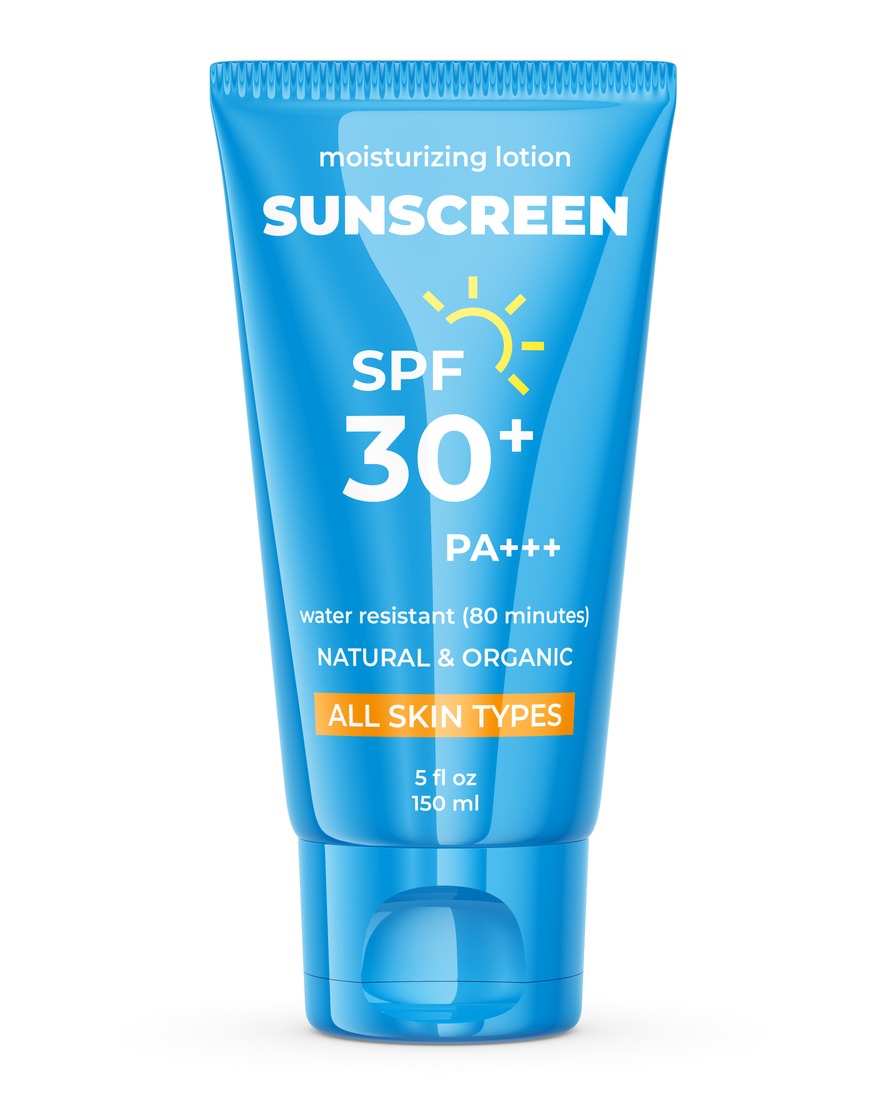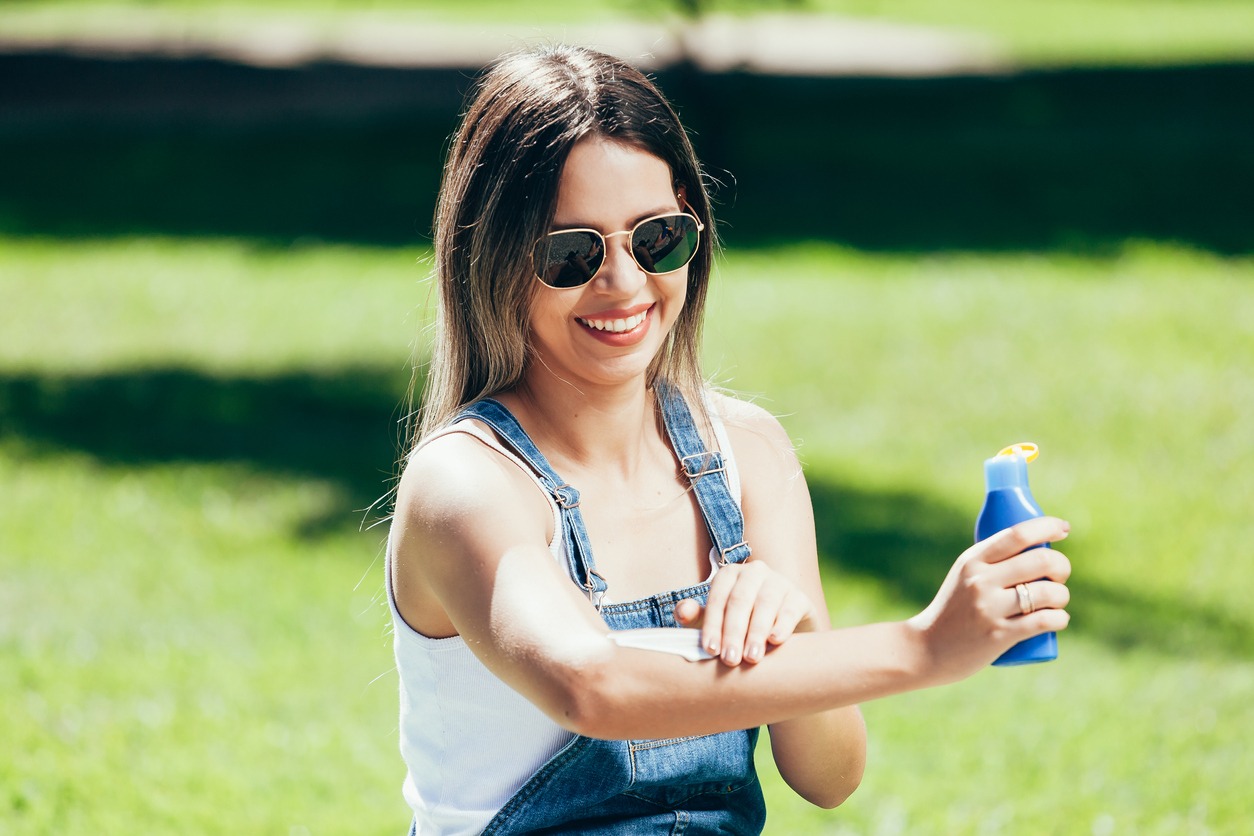According to the Centers for Disease Control and Prevention (CDC), skin cancer is the most prevalent form of cancer in the United States. Sun exposure also makes wrinkles and hyperpigmentation, which are visible signs of aging, appear.
Even though you might think about sunscreen more when it’s hot out, it’s a good idea to wear it all year long.
The American Dermatology Association (ADA) recommends one that says “broad-spectrum,” which means it protects against both UVA and UVB rays. UVA rays cause wrinkles and age spots to show up on your skin before they should. UVB rays cause sunburn. Both can cause skin cancer if you get too much of them.
How much UVB light a sunscreen can block is measured by its SPF. Dermatologists recommend using an SPF of at least 30, which a New York dermatologist, Adarsh Vijay Mudgil, MD, calls “the magic number.” About 93% of UVB rays are blocked by SPF 15, and about 97% are blocked by SPF 30. The ADA says that the SPF should be at least 30.
Every day, it’s important to put enough sunscreen on any skin that’s out in the open. Mudgil says that if you’re going to be outside for a long time, like when you’re playing golf, at the beach, or in a pool, you should put SPF 30 all over your body a half hour before you leave the house and then reapply it every two hours. Mudgil says it’s a good rule of thumb to put on sunscreen every time you get out of the water when you’re swimming.
Types of Sunscreens
A good sunscreen is one that you will actually use. Make sure it protects against both UVA and UVB rays, has an SPF of at least 30, and can withstand rain and sweat without deteriorating.
You should wear whichever sunscreen you like, and different formulations may be appropriate for different parts of the body. Sunscreen can be applied to the skin in a variety of forms, including lotions, creams, gels, ointments, wax sticks, and sprays.
- Using a cream on your face is ideal if you have dry skin.
- Sticks are ideal for the delicate eye area
- Gels are best for oily skin and hairy areas like the scalp and male chest.
Parents sometimes favor sprays because they are simple to apply to children. However, it can be tricky to gauge how much sunscreen you have applied when using sprays, increasing the risk of insufficient coverage of skin that will be exposed to the sun. Avoid using these items while smoking, as well as inhaling them or putting them near a heat source. Never apply spray sunscreen in close proximity to your face or mouth, since doing so could result in inhalation. Apply sunscreen to your face by spraying it into your palms and rubbing it in. Pay attention to the wind direction when applying spray sunscreens to youngsters, as inhaling is to be avoided.
There are sunscreens designed for specific uses, such as for delicate skin or babies, and there are also tinted sunscreens that protect the skin from UVA, UVB, and visible light from the sun without leaving a white “cast.”
There are sunscreen products that double as moisturizers or makeup. While these items are helpful, it’s important to keep in mind that sunscreen should be reapplied around every two hours when you’re outside.
Insect repellents and sunscreens may be sold together. Sunscreen should be applied liberally and regularly, but insect repellent should be used sparingly and considerably less frequently, hence the AAD advises against combining the two.
In addition, while certain sunscreens are water resistant, no sunscreen is “waterproof” or “sweatproof.” Due to the potentially misleading nature of these phrases, they are prohibited for use by the sunscreen industry. Water-resistant sunscreen still needs to be reapplied after swimming or heavy perspiration.
Chemical vs Physical Sunscreens
Chemical sunscreens soak up the sun’s rays like a sponge. They have one or more of oxybenzone, avobenzone, octisalate, octocrylene, homosalate, and octinoxate as active ingredients. Most of the time, these kinds of lotions are easier to rub into the skin and don’t leave a white “cast.”
Physical sunscreens sit on the surface of your skin and block the sun’s rays like a shield. They have zinc oxide and/or titanium dioxide as the active ingredients. If you have sensitive skin, choose this type of sunscreen.
If you are worried about some of the ingredients in sunscreen, you can choose a formula with different active ingredients. As long as your sunscreen protects against a wide range of UV rays, doesn’t get wet, and has an SPF of 30 or more, it can keep you safe from the sun.
Sunscreen for Sensitive Skin
It can be harder to find the right formula if you have sensitive skin and are prone to irritation or breakouts. To find the best sunscreen for sensitive skin, it’s best to avoid ingredients like fragrances, preservatives, essential oils, and chemical filters, which can cause dryness, flaking, or redness.
Also, it’s better to choose a mineral (also called “physical”) sunscreen over a chemical one. Look for “titanium dioxide” or “zinc oxide” on the label. Mineral sunscreens provide a physical barrier against UV rays, while chemical sunscreens soak up UV rays. If you tend to get acne, look for a formula that won’t make your pores clog. If your skin is very dry, look for ingredients that will help it feel better, like colloidal oatmeal or ceramides.
What exactly is a mineral sunblock?
Mineral sunscreens are composed of zinc oxide and/or titanium dioxide. These ingredients stop the UV rays from reaching your skin by reflecting, scattering, and absorbing them. They don’t get into the skin like chemical sunscreen ingredients do, and 100% mineral sunscreens are thought to be better for your skin than the ingredients in chemical mineral sun protection products.
What Mineral Sunscreens Can Do for You
Mineral sunscreens are better than non-mineral sunscreens in many ways. These things are:
- Less likely to cause allergies and sensitivities, especially in people who are prone to them.
- Mineral options are less likely to mess with your hormones because there is no evidence that zinc oxide or titanium cause the same problems that oxybenzone does.
- It’s easier to put on kids’ skin because it doesn’t get into their bloodstream like chemical ingredients can (which is why most pediatricians recommend mineral sunscreen for children). Also, mineral sunscreens have a higher SPF rating if they are used correctly, which is very important for soft, chubby cheeks.
- Lasts longer than chemical-based sunscreens, which can wear off faster because they don’t repel water (upwards of 80 minutes). The ingredients are less likely to be absorbed by the skin, so you only need to put it on once or twice a day instead of every few hours like with chemical sunscreens. This means that it is safe and effective sun protection that doesn’t need to be absorbed into the body. Most of the time, they are better for your skin. The mineral properties not only protect our skin from the sun, but they also moisturize, are gentler on the skin, and are good for its health. Zinc oxide and titanium dioxide are made up of ingredients that are found in nature. These ingredients work to strengthen the skin’s barrier and protect against sun damage and inflammation.
- Mineral sunscreens act as a barrier on the skin that reflects light and are more effective – naturally and right away – because they protect against the widest range of UVA and UVB rays. They have antioxidants that protect us from “Blue Light,” or “High Energy Visible Light.” Even though this kind of light doesn’t burn like the sun does, it can be just as harmful as UVA/UVB light (though more research needs to be done) because it goes deep into the skin and breaks down the properties of the skin.
- They are better for the environment than chemical sunscreens because they don’t wash off as easily into the water supply.
Application Guidelines
Almost nobody uses enough, and almost nobody puts it on right. Follow the tips below for how to put on sunscreen, and you’ll be one of the few who does it right:
- How you put on sunscreen is much more important than the sunscreen you choose. If you put on an SPF 50 sunscreen without thinking about it, it won’t protect you as well as an SPF 30 (or SPF 15) sunscreen that you put on carefully.
- Put on 15 minutes before going out in the sun. All sunscreens are the same in this way.
- Put on a lot more sunscreen than you think you need to. If you’re wearing shorts and a T-shirt, a good rule of thumb is to use at least an ounce (think of a full shot glass) and make sure to cover every square inch of skin that’s showing.
- Put it on again every two hours at least. This is another rule that is true for all sunscreens but that many people don’t follow.
- Bring enough stuff for your trip. Dermatologists say that two people on a four-hour hike on a sunny day should use an entire 4 fl. oz. tube of sunscreen, which might sound like a way to sell more sunscreen. If you look at the date on an old tube, you may not be bringing enough (and you probably didn’t use enough the last time you used it).
- Every day, use a sunscreen with at least 15 SPF. This is what the Skin Cancer Foundation says you should do. For long activities outside, the foundation recommends SPF 30 or higher.
Sunblock and babies: Protect babies younger than 6 months by keeping them in the shade, since their skin can easily soak up sunscreen.
Sunscreens that spray: The FDA says that sprays shouldn’t be used on children because they could inhale them and cause breathing problems like asthma. Sprays also make people less likely to put on enough sunscreen. You can use sprays to cover up thinning hair, but a hat is still your best bet.
Sunscreen expiration dates: As a general rule, a sunscreen is good for up to three years, but the “use by” date is the best way to tell. Sunscreen should be kept in a cool, dry place as much as possible because heat and humidity make it go bad faster.
Conclusion
Wearing sunscreen every time you go outside is a must. However, the sun’s rays are strong, so sunscreen alone won’t provide adequate protection. Seeking shade, donning a wide-brimmed hat and sunglasses, and donning clothing designed to block the sun are all great ways to protect yourself from the sun. Always reapply sunscreen throughout the day because no product can provide 100% protection from the sun.



